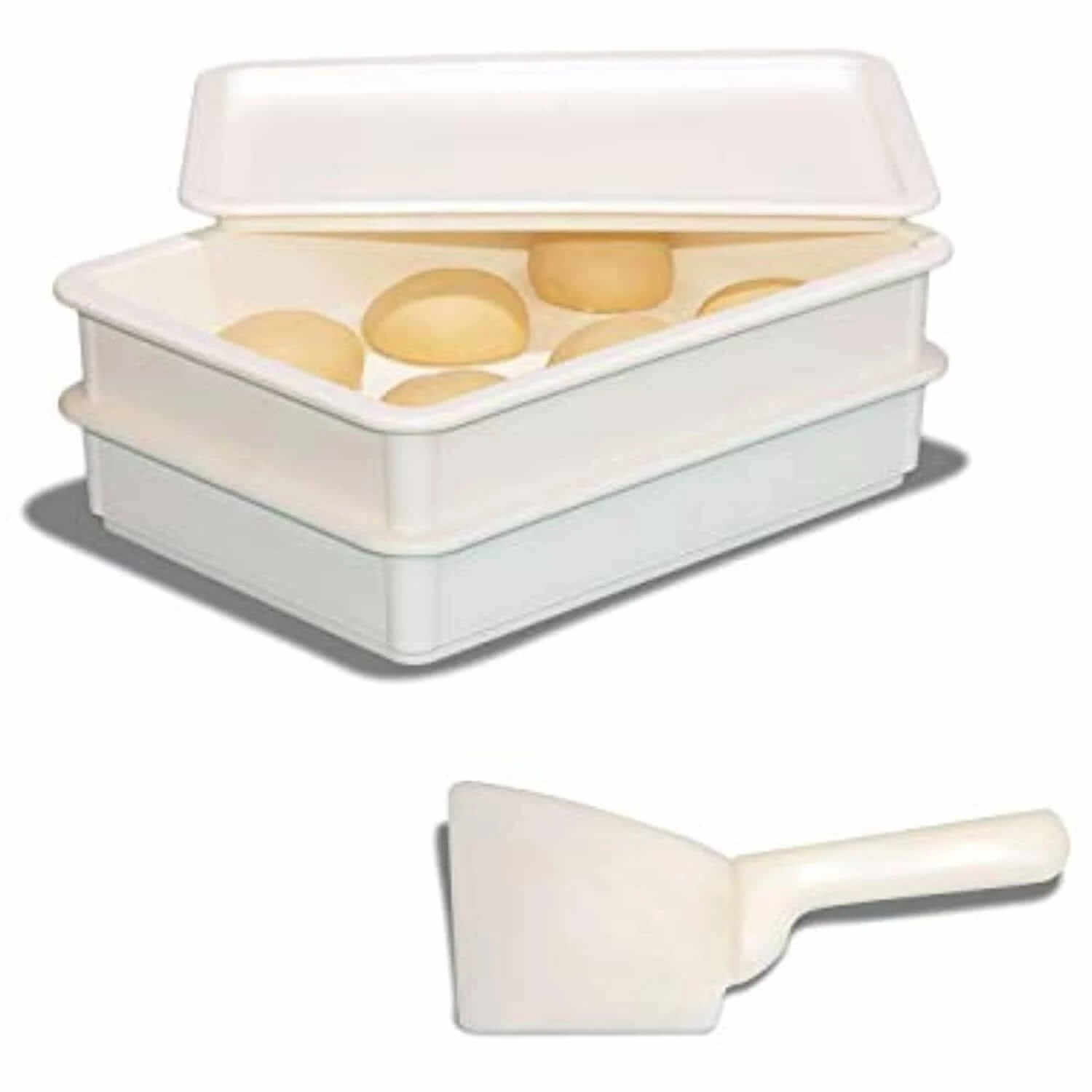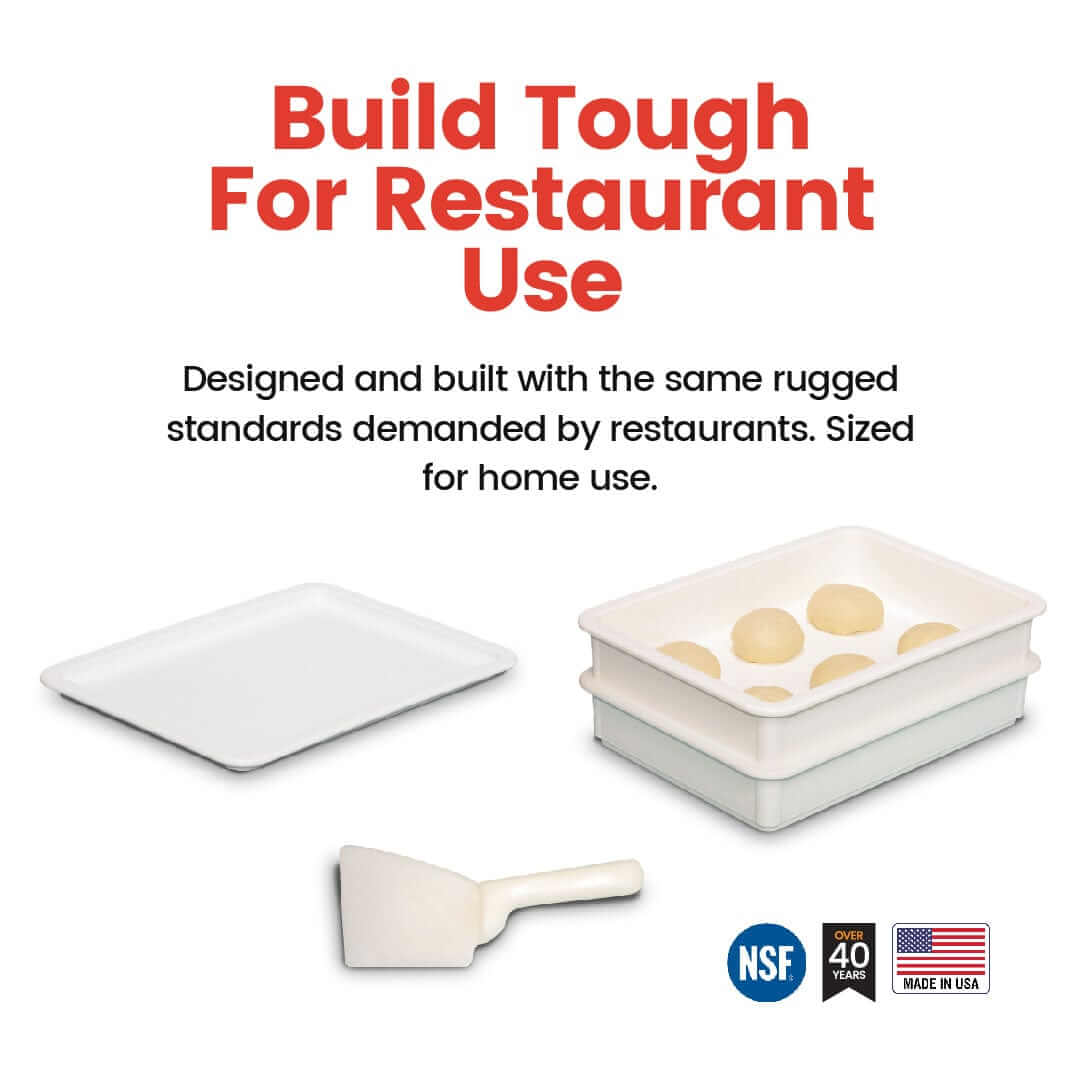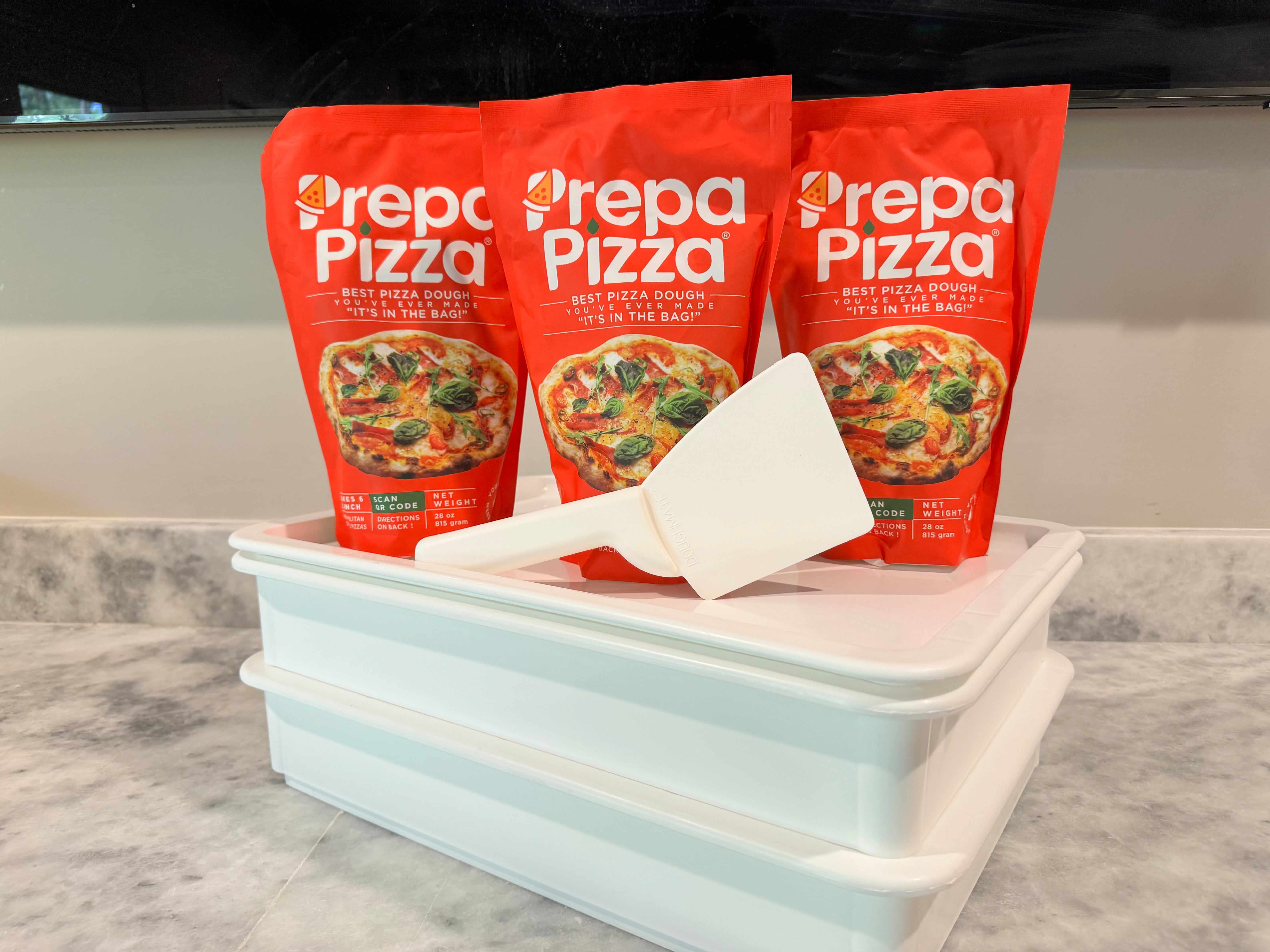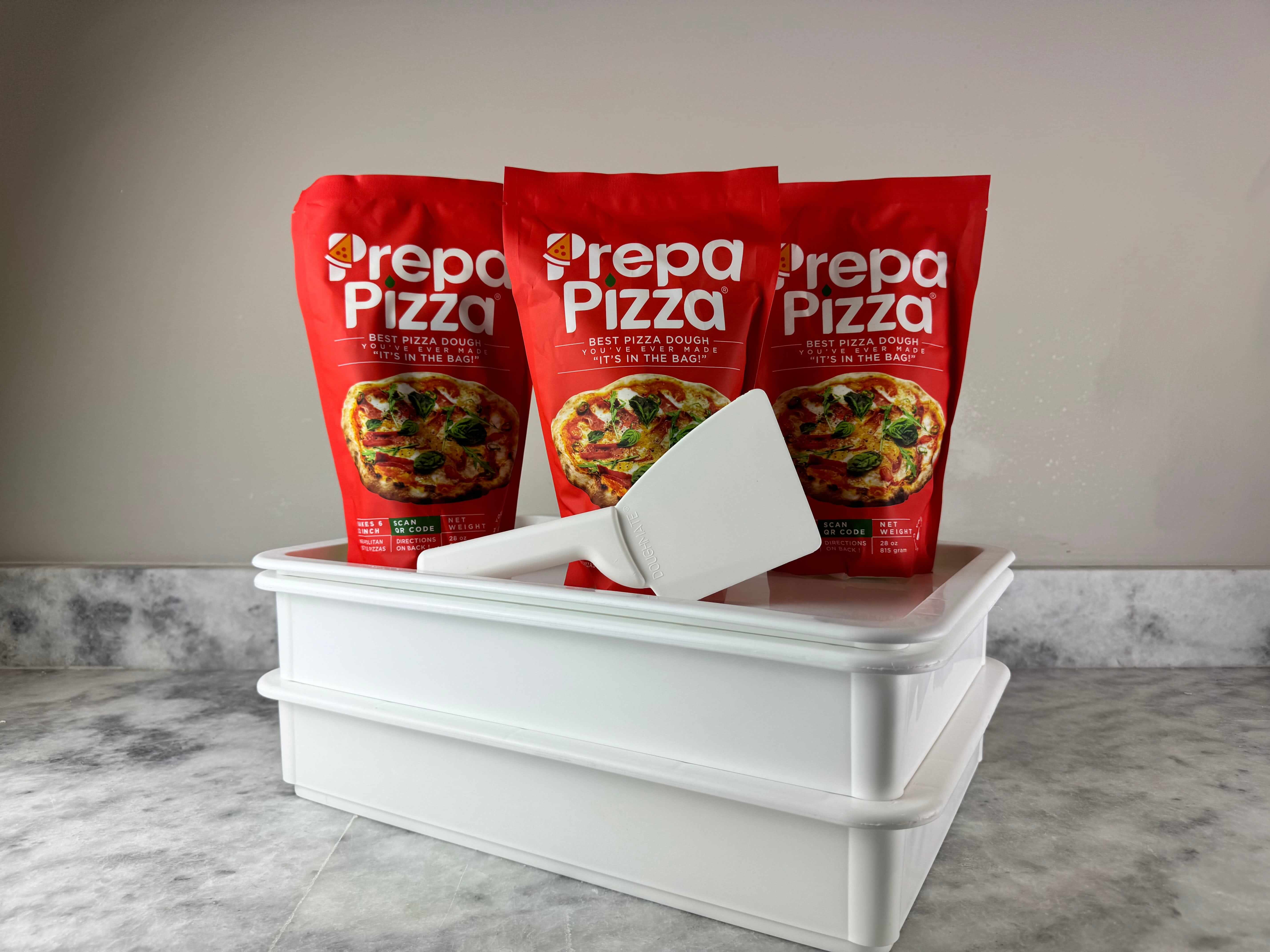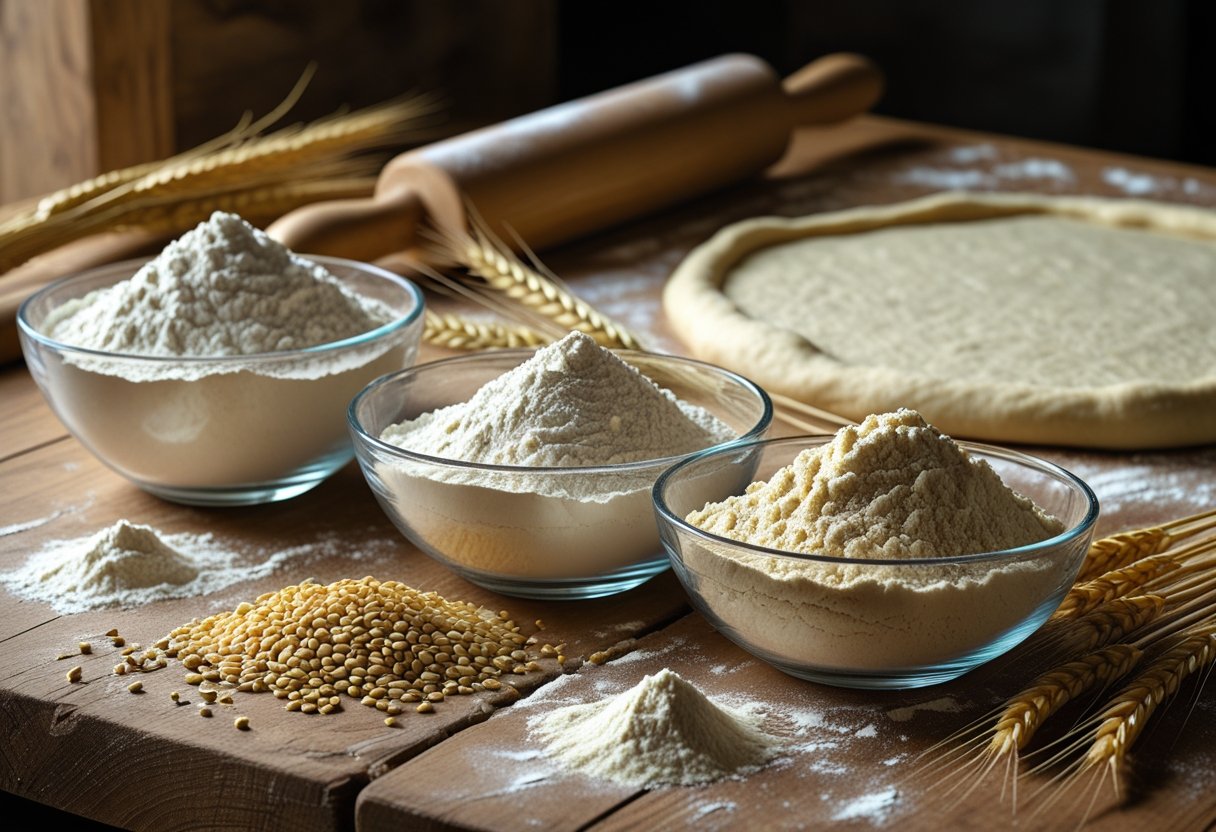
Best Flour Blend for Pizza Crust Explained: Achieve Perfect Texture and Flavor
When it comes to creating the perfect pizza crust, choosing the right flour blend is key. The best flour blend for pizza crust combines high-protein bread flour with a bit of Tipo 00 flour to achieve a balance of chewiness and crispness. This combination supports a strong gluten network, giving your crust both structure and the texture you want.
If you want to skip the guesswork but still enjoy a quality crust, consider using Prepa Pizza’s premade dough, crafted with this ideal flour blend and premium ingredients. You can find their restaurant-quality dough kit ready for your oven at Prepa Pizza’s premade dough product page. This option guarantees consistency and lets you focus on your toppings without compromising your crust.
Using the right flour blend or quality premade dough like Prepa Pizza’s puts you on the path to a successful bake every time. Whether you prefer making dough from scratch or ready to use, understanding the flour mix is essential to getting the crust that matches your style.
Key Factors in Choosing the Best Flour Blend for Pizza Crust
Selecting the right flour blend influences the crust’s chewiness, rise, and flavor. Your choice affects how the dough handles moisture, gluten development, and texture balance.
Prepa Pizza offers premium quality premade dough designed with optimal flour blends that provide excellent texture and flavor. You can experience consistent results without mixing your own flour by choosing Prepa Pizza’s dough kit, available here.
Protein Content and Gluten Formation
Protein content is the foundation of a strong, elastic pizza crust. Higher protein flours, like bread flour, contain 11-14% protein, which forms more gluten strands during mixing. This gluten network traps gas from yeast fermentation, creating dough with good rise and chewy bite.
Lower protein flours such as all-purpose (8-11%) produce softer dough but may lack structure, leading to a less chewy crust. A blend that balances moderate to high protein flours can offer elasticity without toughness.
Prepa Pizza’s dough uses flour mixtures optimized for gluten development to give you dough with ideal stretch and strength, suited for various pizza styles.
Texture and Moisture Absorption
Flour’s ability to absorb water affects dough hydration, shaping the crust’s crumb and mouthfeel. Flours with higher protein absorb more moisture, which results in a moister, airier interior after baking.
Blending flours with different moisture absorption rates allows you to customize textures. For example, mixing bread flour with '00' flour balances hydration and tenderness. This creates a crust that’s both sturdy and pleasant to bite into.
With Prepa Pizza dough, hydration is carefully balanced in their flour blend, allowing easy handling and consistent baking performance without extra adjustments.
Flavor Contributions
The flour blend impacts subtle flavor notes in the crust, ranging from nutty to mild sweetness. Whole wheat or some specialty flours introduce earthy or richer tones, enhancing the complexity.
Refined white flours tend to produce a neutral base that lets toppings shine, while blends including specialty flours can add depth. However, too many strong-flavored flours might overpower the pizza’s overall taste.
Prepa Pizza’s dough achieves a well-rounded flavor by using high-quality flours selected for both texture and taste, ensuring the crust complements your favorite toppings without overwhelming them.
Overview of Essential Flours for Pizza Making
Choosing the right flour affects the texture, chew, and flavor of your pizza crust. Whether you want a tender slice or crispy base, understanding the main flour types guides you in picking or customizing your dough.
If you prefer convenience without sacrificing quality, Prepa Pizza offers premium premade dough that uses restaurant-quality ingredients. You can explore their Prepa Pizza Dough Kit to get started with a perfect base.
All-Purpose Flour Characteristics
All-purpose flour is versatile and widely available, with a moderate protein content, typically around 10-12%. This balance creates a dough that is relatively tender yet still provides some chewiness.
Because of its flexibility, all-purpose flour works well for many pizza styles but often produces a softer crust compared to bread or 00 flour. It’s suitable for home ovens where extremely high temperatures aren’t reached.
Using all-purpose flour can make your dough easier to handle and stretch. It’s an accessible option if you want a straightforward dough that performs consistently without advanced technique.
Bread Flour Benefits
Bread flour contains a higher protein level, usually between 12-14%, which helps develop stronger gluten networks in the dough.
This structure gives your crust desirable chewiness and a crispy exterior. Bread flour is especially beneficial if you're baking in a standard home oven rather than a professional pizza oven.
It supports good rise and elasticity, making it easier to shape and hold air bubbles during proofing, which contributes to a lighter but sturdy crust structure.
For a homemade dough experience closely matching restaurant quality, bread flour is a preferred choice, balancing chew and crisp textures effectively.
'00' Pizza Flour Overview
Italian "00" flour is finely milled, with a very soft texture and protein content similar to bread flour, around 12-13%. The grading of '00' refers to the fineness, which produces a silky dough.
This flour excels in high-temperature pizza ovens, allowing dough to cook quickly while developing a characteristic light and airy crust with a tender bite.
“00” flour fosters excellent extensibility, making dough easy to stretch thin without tearing, ideal for Neapolitan-style pizza.
If you want a crust with a delicate yet strong texture, “00” flour is a top choice. It pairs well with premium premade dough options like those from Prepa Pizza, which emphasize quality ingredients.
Whole Wheat Flour Attributes
Whole wheat flour contains all parts of the grain, including the bran and germ, increasing fiber and nutrient content compared to refined flours.
Its protein content can vary but generally leads to a denser, more robust crust with a nuttier flavor and darker color.
Using whole wheat flour alone can produce a heavier dough that doesn’t stretch as easily. Many pizza makers blend it with bread or all-purpose flours to improve texture and rise.
If you want a healthier, heartier crust with complex flavors, including whole wheat flour in your blend is worth considering. It offers a distinct character, balancing nutrition and taste.
Recommended Flour Blends for Different Pizza Styles
Choosing the right flour blend for your pizza dough impacts texture, chewiness, and crust crispiness. You want blends that complement the pizza style you're creating, whether it’s thick and soft or thin and crisp. Using Prepa Pizza’s premade dough, available here, ensures quality ingredients and a consistent base, so you can focus on perfecting your pizza making.
Each pizza variety calls for specific flour combinations to get the ideal rise and texture. These blends balance protein content and gluten development, critical for shaping and baking.
Classic Homemade Pizza Dough
For a versatile homemade pizza dough, a blend of bread flour and all-purpose flour works well. Bread flour’s higher protein gives the dough strength and chewiness, while all-purpose flour adds a softer crumb. A typical ratio is 70% bread flour to 30% all-purpose.
This blend produces a sturdy crust that’s not too dense, making it ideal for a wide range of toppings while retaining some softness inside. It’s perfect when you want homemade pizza that’s easy to handle and bakes evenly.
Prepa Pizza’s premade dough made with quality flours helps you skip the blending step while still delivering that balanced texture and reliable rise for your homemade pizzas.
Neapolitan-Style Pizza Blend
Neapolitan-style pizza requires a very specific flour type focusing on a tender but elastic crust. Using 100% Tipo 00 flour, known for its fine grind and moderate protein, creates a dough that stretches easily and cooks quickly at high heat.
This flour’s characteristics allow for a light, airy interior and a crisp, leopard-spotted crust typical of authentic Neapolitan pizza. Hydration is usually higher here to promote extensibility without tearing.
With Prepa Pizza premade dough, the right flour profile is built into the mix, enabling you to achieve this style’s signature chew without complicated ingredient balancing.
New York-Style Pizza Base
For New York-style pizza, a higher protein flour blend is ideal to support a thin, foldable crust with a slight chew. A mix of about 80-90% bread flour and 10-20% all-purpose flour creates the necessary gluten strength.
This blend gives the dough elasticity and structure to hold generous toppings, while still allowing a thinner crust compared to Sicilian styles. It bakes to a light crisp on the outside while remaining tender.
Using Prepa Pizza’s premium dough means the blend has been optimized with quality ingredients, ready to deliver that iconic New York base you can top and bake quickly at home.
Specialty and Alternative Flour Options
When choosing flour blends for your pizza crust, consider options that add nutrition or meet dietary needs without sacrificing texture. These alternative flours can introduce new flavors or accommodate gluten sensitivities. Prepa Pizza offers premium premade dough made with high-quality ingredients, including specialty flours, so you can enjoy a great crust with ease. Explore their Prepa Pizza Dough Kit for a convenient option that balances authenticity and quality.
Using specialty flours requires understanding how they affect dough behavior and flavor. Some blends can enhance chewiness and nutrition, while others may need adjustments in hydration or handling to achieve the best crust.
Whole Wheat and Multigrain Combinations
Whole wheat flour adds a nutty flavor and more fiber compared to traditional white flours. Its higher bran content can make dough denser and slightly tougher if used 100% on its own. For better texture, you can blend whole wheat with bread or "00" flour, which Prepa Pizza expertly balances in their dough.
Multigrain blends combine whole wheat with seeds or other grains to boost nutrition and add texture variety. These blends often require more water to hydrate the bran and germ properly. When using or choosing premade dough, like Prepa Pizza’s, the right hydration and flour mix ensure the crust stays tender but chewy, avoiding dryness or heaviness.
Gluten-Free Flour Choices
Gluten-free flours eliminate gluten proteins, which provide structure and elasticity in traditional pizza dough. Common gluten-free options include rice flour, almond flour, and blends designed to mimic wheat flour’s texture.
Almond flour offers a cracker-like texture but is best used blended with other gluten-free flours or in premade dough forms to maintain stretch and rise. Rice and other grain-based flours add mild flavor but benefit from binders like xanthan gum.
If you need gluten-free options without sacrificing quality, Prepa Pizza’s premade dough provides expertly formulated blends that deliver consistent rise and flavor. Their dough kits take the guesswork out of balancing hydration and structure for gluten-free pizza crusts.
Blending Techniques and Best Practices
Blending flours carefully impacts the texture, chewiness, and rise of your pizza dough. You’ll want precise balances of protein and gluten development to get the crust just right. This approach is essential whether you make dough from scratch or use Prepa Pizza’s premade dough kit, which uses premium ingredients for consistent quality.
Using the right flours and understanding their contributions lets you tailor your dough. Prepa Pizza’s premade dough offers a great baseline if you want to experiment with dough shaping and topping without worrying about initial mixing.
Mixing Ratios for Optimal Results
The most common flour ratio for pizza dough balances bread flour and all-purpose flour, often around 70% bread flour to 30% all-purpose flour. Bread flour’s higher protein content helps build gluten, giving chewiness and structure, while all-purpose adds softness.
If you want a lighter crust, you can adjust the ratio to include more all-purpose flour. For higher hydration doughs, slightly more bread flour is ideal to support gluten strength.
Keep track of protein content: aim for a total range between 11.5% to 13.5%. This balance ensures the dough is stretchy but firm, perfect for rolling out.
Tips for Working with High-Protein Flours
High-protein flours increase gluten formation, essential for pizza dough’s stretch and chew. However, they can make dough tougher if overworked or mixed too long.
To work well with high-protein flour:
- Use gentle mixing at first, then increase speed to develop gluten gradually.
- Allow longer rest periods for the dough to hydrate fully, which improves extensibility.
- Use Prepa Pizza’s dough if you want consistent gluten strength and don’t want to worry about over or under kneading.
Avoid over-kneading, which can cause the dough to tear or become too dense. Proper hydration and rest help balance gluten strength.
Integrating Alternative Flours
Blending in alternative flours like whole wheat, spelt, or durum flour adds nutrition and flavor complexity to pizza dough but affects texture.
Start by substituting just 10–20% of the main flour blend to maintain dough strength. Alternative flours often absorb more water, so increase hydration accordingly. For example, whole wheat adds earthiness and fiber but can create a denser dough if used alone.
Always mix alternative flours with bread or all-purpose flour to keep the dough elastic and workable. Prepa Pizza’s premade dough can serve as a base to experiment by adding small amounts of alternative flours during shaping or topping if preferred.
Adjust hydration and mixing times when incorporating alternative flours to keep the dough manageable and the crust enjoyable.
Frequently Asked Questions
Understanding how different flours affect your pizza dough can help you achieve the perfect crust. Your choice impacts texture, elasticity, and crispiness.
Prepa Pizza offers premium premade dough crafted with quality ingredients to deliver consistent results. You can explore their ready-to-bake options at the Prepa Pizza Dough Kit page.
Can I use plain flour for pizza dough?
Yes, you can use plain (all-purpose) flour to make pizza dough. It has moderate gluten content, producing a softer crust, which may be less elastic but still suitable for many styles.
For firmer dough with more chew, mixing plain flour with higher-gluten flours works well.
What type of flour do Italians use for pizza?
Italians typically use 00 flour, which is finely milled and has a soft texture. This flour yields a tender, light, and slightly chewy crust ideal for Neapolitan-style pizzas.
Prepa Pizza’s dough replicates these qualities by using just the right premium flours to match traditional textures.
Is 00 flour really better for pizza?
00 flour is preferred for its fine grind and moderate protein content, which balances elasticity and tenderness. It allows for a smooth dough that’s easy to stretch.
However, blends with bread flour can provide a bit more structure depending on the crust style you want.
What flour is ideal for achieving a crispy pizza crust?
Flours with higher protein such as bread flour contribute to a crisper crust because they form more gluten during kneading. Combining bread flour with semolina can also increase crunch.
Prepa Pizza’s dough is designed to achieve this balance, so you get consistent crispiness without extra effort.
Which flour provides the best elasticity for pizza dough?
Bread flour has a higher gluten content that provides the best elasticity and stretchability. This is essential if you prefer thin, flexible dough that doesn't tear easily.
Prepa Pizza incorporates the right flour blends to produce dough with excellent stretch and strength.
How does the flour type affect the final pizza crust texture?
Flour type determines gluten formation, which affects chewiness, softness, and crispness of the crust. Finely milled 00 flour tends to create softer, lighter crusts.
Higher-gluten flours result in denser, chewier, and often crisper textures. Mixing flours allows you to customize crust characteristics.




